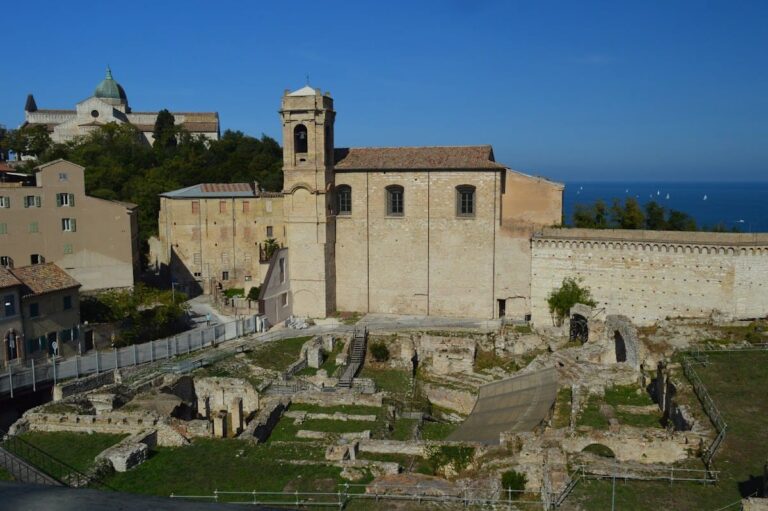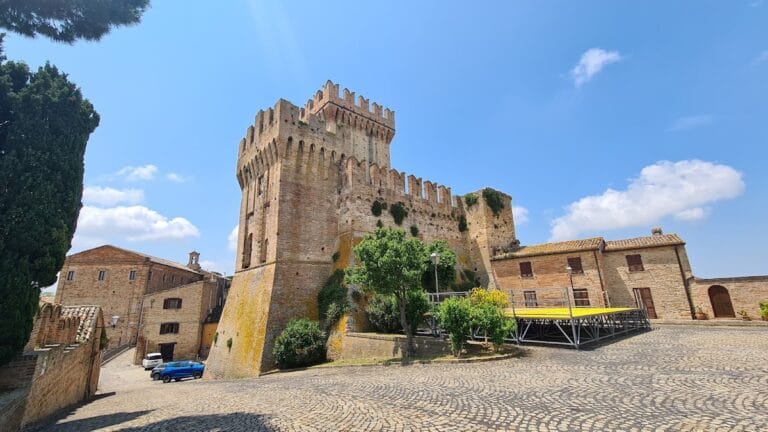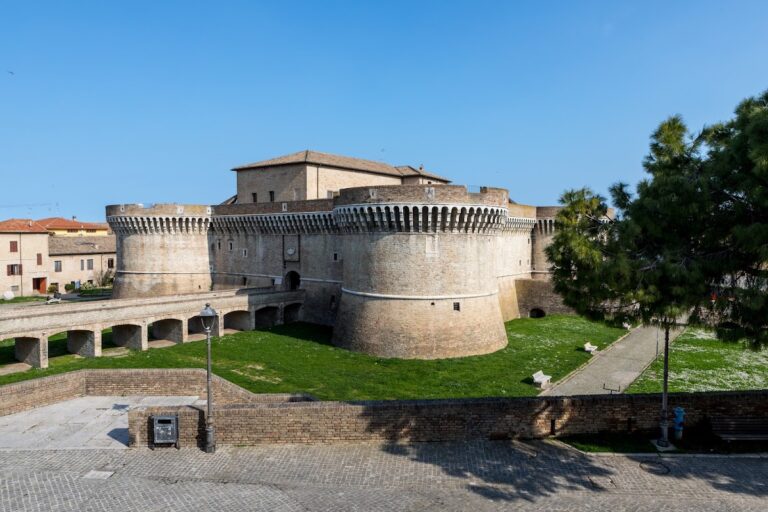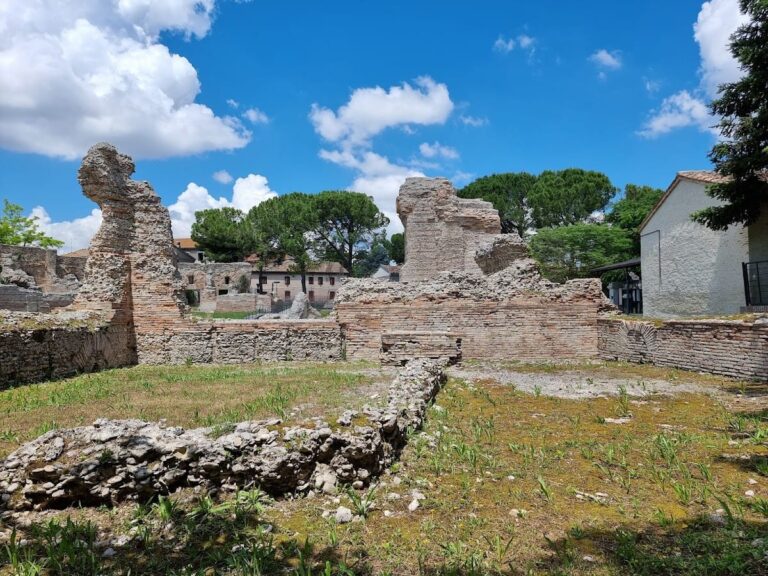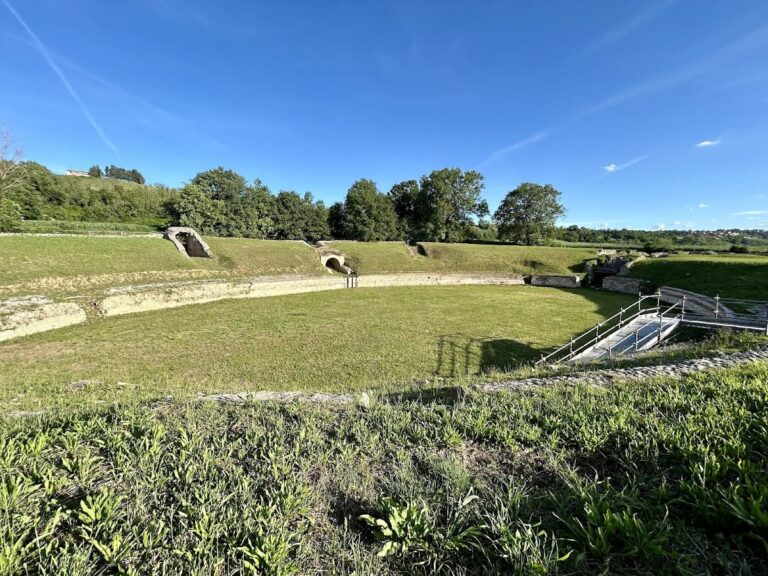Arch of Trajan in Ancona: A Roman Triumphal Arch Honoring Emperor Trajan
Visitor Information
Google Rating: 4.5
Popularity: Medium
Google Maps: View on Google Maps
Official Website: amarche.it
Country: Italy
Civilization: Roman
Remains: Civic
History
The Arch of Trajan stands in Ancona, a city on Italy’s Adriatic coast. It was built by the Romans in the early 2nd century AD to honor Emperor Trajan. The arch commemorates Trajan’s expansion and improvement of Ancona’s port, which he funded personally to secure Italy’s maritime access.
Construction likely began around 100 AD, with the arch already depicted on Trajan’s Column in Rome during the Dacian Wars of 105 AD. The inscription on the arch suggests it was completed or rededicated around 117 AD, when Trajan was acclaimed imperator nine times. The Syrian architect Apollodorus of Damascus is believed to have designed the monument.
In the Middle Ages, the arch suffered significant losses when Saracen raiders plundered all its bronze elements, including statues, inscriptions, and naval rostra, in 848 AD. Later, medieval fortifications incorporated the arch, and a tall tower known as the Gamba Tower was built nearby around 950 AD. This tower was demolished in the early 16th century to make way for the Citadel.
During the Renaissance, the arch inspired humanist scholars, notably Ciriaco Pizzecolli, who began his archaeological studies during restoration work in 1421. In the 19th century, engineer Michele Bevilacqua redesigned the surrounding area, creating the neoclassical Barriera Gregoriana and relocating medieval walls to improve the arch’s visibility.
The arch endured damage and neglect during World War I and the interwar years, including the construction and later removal of a military barracks adjacent to it. Although World War II bombings destroyed much of the surrounding urban area, the arch itself was spared. Postwar port expansions moved the arch further inland, altering its original connection to the sea.
A restoration completed in 2000 removed a 19th-century fence, improved lighting, and made the monument fully accessible. The arch still bears visible cannonball damage from 19th-century conflicts, dated to around 1849 or 1860.
Remains
The Arch of Trajan is a Roman triumphal arch built in the early 2nd century AD, located on the mole of Ancona’s port. It was designed as a maritime landmark, visible to ships approaching the city. The arch stands about 18.5 meters tall on a high podium reached by wide steps added in 1859.
Constructed from Proconnesian marble quarried on Marmara Island, the arch features a single archway approximately 3 meters wide. It is flanked by two pairs of fluted Corinthian columns on each side, set on pedestals. The proportions are slender and elevated compared to other Roman arches.
Originally, the attic supported six bronze statues, three facing the sea and three facing the land. The sea-facing figures represented the gods Neptune, Mercury, and Portunus, while the land-facing statues depicted Emperor Trajan, his wife Plotina, and his sister Ulpia Marciana. Holes on the attic’s upper surface confirm the placement of these statues, though all bronze elements were lost during Saracen raids in 848 AD.
Fourteen bronze rostra, symbolizing Roman naval power, once adorned the arch. Attachment points for these naval rams remain visible on the marble. Keystone sculptures on both sides show personifications of Tellus (Earth) and Oceanus (Sea). The Oceanus bust is well preserved, while Tellus is heavily eroded.
The arch bears inscriptions originally made of gilded bronze letters. The central inscription honors Trajan’s titles and achievements, while side inscriptions pay tribute to Plotina and Marciana. Excavations in 1936 uncovered the arch’s foundation, revealing an octagonal limestone base of seven courses bonded with pozzolana mortar, resting on leveled natural rock about 1.5 meters below the pavement.
Over centuries, the arch’s surroundings changed significantly. Medieval walls once attached to it were removed in the 19th century, and military structures built nearby were later demolished. Modern lighting now highlights the arch’s silhouette against the city and the nearby Guasco hill, where Ancona Cathedral stands. The monument remains well preserved following recent restorations and cleaning.

